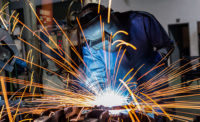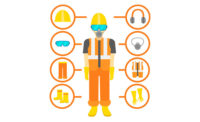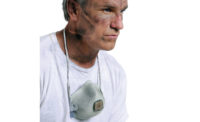Workplace eye injuries from mechanical or chemical means have increased due to the rise of industrialization globally. The two most common reasons behind such injuries are either the workers were not wearing eye protection or they had worn wrong eye protection at the time of the accident.
As the National Institute for Occupational Safety and Health (NIOSH) reports, around 2,000 U.S. workers experience an eye injury associated with work on a daily basis. A survey conducted by the Bureau of Labor Statistics on workers who suffered eye injuries showed that nearly three out of five of these workers’ eyes were exposed as they were not wearing eye protection during the accident. The World Health Organization estimates that eye-related occupational accidents is the second most dangerous hazard that causes blindness after cataracts.
The financial effect of such work-related eye injuries is as huge as $300 million per year. This is a cumulative loss in production time, workers’ compensation and medical expenses. These figures derive the significance of protecting workers’ eyes.
Industrial eye protection market analysis
The industrial eye protection market has gained remarkable growth in the past years. This is due to the fact that many employers in industrial sectors such as manufacturing, mining, construction, etc. are adopting strict government regulations and policies in their workplaces and factories. For example, OSHA has introduced safety standards to avoid accidents at the workplace for several end-use sectors. High prevalence for employee safety policies along with strict government regulations has boosted this sector. There has also been the development of new products through R&D investment and innovation, which has had a profound impact in this industry landscape.
The global industrial eye protection market was valued at $1.92 billion in 2016 and $2.3 billion in 2018. This market is expected to rise rapidly and surpass 270 million units by 2024.
Innovative trends
Rising demand of CR-39 lenses – Crystal Vision (CR) are lenses of the highest quality which are revolutionizing industrial eyewear. These lenses are half as heavy as glass and have good optical quality like glass. The adoption of trivex, which is an ultra-light, thin and high impact resistant lens, will create new growth opportunities in this segment.
Anti-Fog Coating – Fog has been one of the main problems of eyewear users. It interrupts visibility and the situation worsens as the safety glasses have tighter fittings usually. Anti-fog coating prevents the development of mist on glasses, which helps in better visibility during temperature differences and high humidity. While high humidity leads to more moisture in the working environment, high heat and temperature leads to more worker perspiration. Both of these situations lead to fogging, which can cause accident due to low visibility. Hence, anti-fog coating is indispensable for industrial eyewear. Some of the advanced anti-fog coatings technologies use surfactant film to control moisture.
Anti-Fog Polarized and Scratch Resistance Technology – Use of anti-fog polarized and scratch-resistance technology helps to improve visibility. A single scratch on the eyewear can cause a distraction and reduced visibility. While industrial workers tend to use garments, gloves and boots even after they are torn minimally or have scratches, it is imperative to stop using scratched eyewear as it can cause accidents due to reduced vision.
Other trends – The use of foam-lined gaskets, gray-tinted and polarized lenses in safety glasses are a few of the other developments and trends in this sector. While the foam-lined gasket helps to reduce debris exposure while working and also provides convenience and cushioning, the gray-tinted and polarized lens helps to reduce glare and reflections. Apart from this, some safety glasses also have integrated “reading lenses” at the bottom of the lens that facilitate a close-up job.
Any industrial job involving hazardous substances or airborne particles carries a risk of eye injury. In such cases, using an eye protection suitable for the task and taking proper prevention measures can drastically reduce the chances of accidents. Employers should check their working environment and make it safe for employees. They should provide appropriate eye protection devices to the workers who are required to do high-risk work.
References:
- Protecting Your Eyes at Work. https://www.aoa.org/patients-and-public/caring-for-your-vision/protecting-your-vision
- Industrial Eye Protection Market Size By Material (Polycarbonate, CR-39, Trivex, Glass), By Product (Safety Spectacles [Prescribed, Non-Prescribed], Safety Goggles, Welding Shields, Face Shields), By Application (Construction, Oil & Gas, Chemicals, Mining, Pharmaceutical, Food Processing, Transportation, Firefighting) Industry Analysis Report, Regional Outlook (U.S, Canada, Germany, UK, France, Italy, Spain, Russia, China, India, Japan, South Korea, Thailand, Indonesia, Australia, Taiwan, Brazil, Mexico, Argentina, Saudi Arabia, UAE, South Africa), Growth Potential, Price Trends, Competitive Market Share & Forecast, 2017 – 2024. (2017, July). https://www.gminsights.com/industry-analysis/industrial-eye-protection-market
- Eye Protection in the Workplace. U.S. Department of Labor (DOL), California Occupational Safety and Health Administration. http://www.elcosh.org/document/1616/d000152/Eye+Protection+in+the+Workplace.html
- Safety Eyewear Market Size, Share & Trends Analysis Report By Application (Military, Construction, Industrial Manufacturing, Oil & Gas), By Product Type (Prescription, Non-prescription), And Segment Forecasts, 2019 – 2025. (2019, May). https://www.grandviewresearch.com/industry-analysis/safety-eyewear-market
- Industrial Eye Protection Market To Surpass $2.5bn By 2024: Global Market Insights, Inc.: PR Newswire. (2017, November 28). https://markets.businessinsider.com/news/stocks/industrial-eye-protection-market-to-surpass-2-5bn-by-2024-global-market-insights-inc-1009797634
- How Protective Eyewear Has Changed Dramatically Over the Decades. (2017, June 01). https://ohsonline.com/Articles/2017/06/01/How-Protective-Eyewear-Has-Changed.aspx?Page=2
- Anti-Fog Polarized and Scratch Resistance Technology: MCR Safety. https://www.mcrsafety.com/blog/anti-fog-polarized-and-scratch-resistance-technology



